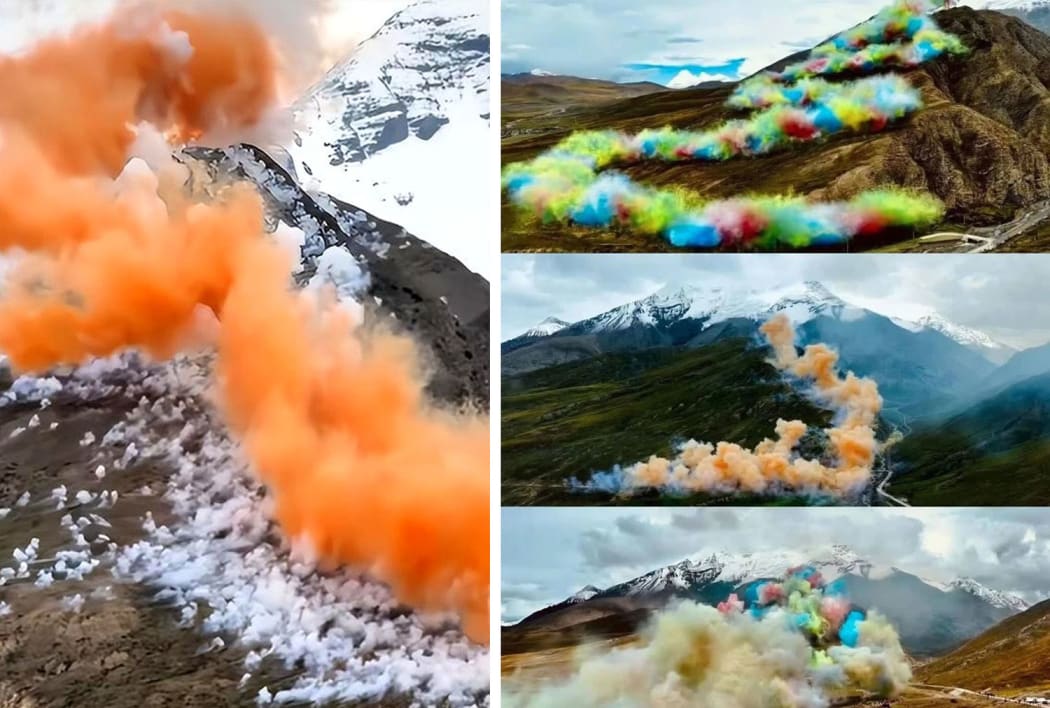
Cai Guoqiang is internationally recognized for his explosive works that emerged during the golden age of globalization. However, when one of his latest work was met with widespread controversy, it revealed how out of step he is with today’s China.
Colorful fireworks shot up from the ground, spiraling along the mountain slope and roaring so loudly that the wind itself seemed to vanish. This was “Ascending Dragon,” a recent work by Chinese contemporary artist Cai Guoqiang sponsored by outdoor brand Arc’teryx. Executed on Sept. 19, 2025, in the Qinghai-Tibet Plateau, the 50-second display took place at an altitude of 5,500 meters.
Although the work embodied the artist’s signature style and met the sponsor’s expectations for symbolic uplift, it ignited almost immediate controversy among scholars and environmentalists upon its online release. Many warned about the acute fragility of the Qinghai-Tibet Plateau’s ecosystem, saying that fireworks could disturb wildlife and damage the thin alpine soil, while the work’s “eco-friendly materials” and post-event cleanup — involving soil turning and site restoration — could in fact worsen ecological degradation. An official investigation validated their concerns, concluding that the firework show affected about 30 hectares of grassland, and cleanup was incomplete. Both Cai’s studio and Arc’teryx issued apolygies.
From within the art world, another wave of criticism developed. This time, it took on a broader comparative lens, arguing that Cai’s work seemingly lacked the anti-commercial and anti-institutional critique that characterized early land and ecological art projects.
While it is tempting to focus solely on the environmental scandal itself, I approach the “Ascending Dragon” controversy as a lens through which to rethink the shifting relationship between art, ecology, and globalization. For me, it is an epistemological rupture that forces us to reconsider how an artist like Cai Guoqiang, once hailed as an emblem of China’s global ascent, became so out of touch with the Chinese land, both materially and metaphorically, and how his work became suspended between spectacle and responsibility.
Cai has long been seen in the global art world as a representative figure of China. One of his most enduring motifs is the dragon, and his use of fireworks draws on traditional Chinese customs of celebration and on the nation’s historic invention of gunpowder. He has used other Chinese historical and cultural references in his works,